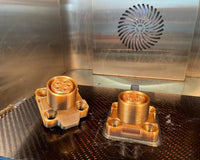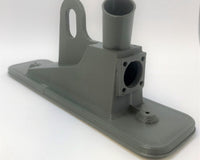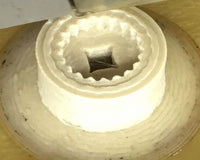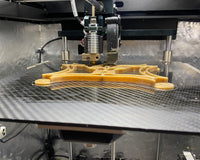We teamed together with Zymergen, Hexagon and AON3D Industrial 3D Printers to test the PI Z2 filament, one of the most intriguing 3D printing polymers of this year. The new, printable Polyimide formulation generated some very intriguing results in tests supported by The Royal Netherlands Navy's Expertise Centre Additive Manufacturing (ECAM), including a high strength, highly isotropic AM polymer part that, despite having a small cross-section, was able to withstand 432 kg of load before failing.
The Z2 Polyimide part printed on the AON M2+ fractured precisely where the Digimat AM program had indicated it would, and it propagated across numerous layers as opposed to just one layer. For a polymer extrusion-based item, this shows a remarkable amount of isotropy.
Predictive modeling and simulation were performed on the tie-down bracket (part in picture) for military cargo planes using Hexagon's Digimat AM software, a tool that can assist engineers shorten overall lead times and simulate end-part performance. The component was then mechanically tested after being 3D printed in Z2 Polyimide with 100% infill on the AON M2+ High Temperature Industrial 3D Printer.
Testing and results
The item withstood a 432 kg load before failing in testing and the Hexagon's program also correctly predicted the loading failure point. Z2 Polyimide has a similar tensile modulus as ULTEM™ 9085, however it is stronger and has more elongation at break. This shows that Z2 potentially has far higher component isotropy and interlayer weld strength compared to ULTEM™.
This high isotropy was discovered during testing when a part fractured through multiple layers in two different places, revealing that the layers, rather than inter-layer welds, had followed the stress front in accordance with the overall structure. The Z2 Polyimide has the capability to replace ULTEM™ due to its increased strength, isotropy, and likelihood of meeting FAR 25.853 (FST) and UL94 V0 standards (testing in progress).






